The Cotswold Hills -- In the Heart of England
Braking strongly, I negotiated another narrow S-turn. The sheep on either side of the rode gazed nonchalantly. We had just arrived in the Cotswold Hills and were searching for the village of Cold Aston and its reputed pub, The Plough. Dusk fell quickly as we reached the cobbled-streets of the village and found the pub. Only a few tables in the low-ceiling room were occupied, so we settled into a cozy corner and studied the chalked menu on the wall. "What’s your preference," shouted the bartender. "I’d recommend the Sheffield Meat Pie this evenin’." We took his advice and by the time we’d finished the hearty meal we were marveling at the fare and the low prices.
Soon the bar was filled to the rafters by a raucous and friendly crowd. Noticing that the dart board was still free, we ordered two Guiness drafts and played a couple of rounds. Then the village regulars took over the board for their nightly contest. They competed fiercely and shouted loudly at each successful throw. Resting against the bar we struck up a conversation with a newly arrived young couple, who lived just around the corner. They gave us advice on the quaintest Cotswold villages and invited us to their place for a cup of coffee. By the time we left their charming bungalow, they had convinced us that the Cotswolds were the most beautiful and friendly English region. The added bonus is being within a one-hour drive of Bath, Oxford, Stratford-Upon-Avon, Stonehenge, Avebury, and Wales. We were ready to explore!
 |
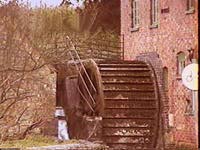 |
Cozy Cotswold Hills
The next morning our friendly hostess served up a standard, large English breakfast of eggs, ham, and tomatoes to start us on our way. Distances are small in the Cotswolds, but there are so many roads and villages that we decided to plan our route. The beautiful countryside is interlaced with a maze of narrow lanes, so it’s important to have a good local map. Using our new friends’ advice, we mapped a course that branched west along several routes from the largest town, Stow-on-the-Wold.
As we passed rolling fields of sheep, we remembered that this region had grown rich on the wool trade in the 1400s through 1600s, resulting in the beautiful villages and manors of Cotswold gold stone. The Cotswold Hills and villages still appear as they did then. When foreign markets brought about an economic decline in the 1700s, the villages were largely deserted until the restorations of this century.
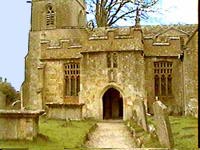 |
 |
We overdosed ourselves on cuteness and quaintness that day. Stow-on-the-Wold has its original town square, pillory stocks on the green, and an array of fine shops. Exploring the cobbled streets, we discovered the perfect tea shop to take a break and enjoy a tasty snack. West of Stow we explored many tiny villages, each one seemingly more memorable than the last. But there was no clear winner. How could we choose between Upper Slaughter and Lower Slaughter? Or between Stanton with its 11th century church, or Chipping Camden with its working marketplace, or Burton-on-the-Water with its stone foot bridges spanning the midtown stream?
Shakespeare’s Stratford Upon Avon
That afternoon we headed north twenty miles to Shakespeare’s Stratford-Upon-Avon. Although the town oozes commercialism, the main attractions are definitely worth the visit. We started with the bard’s home on Henley Street. Even though we are not Shakespeare zealots, we were impressed with Shakespeare’s half-timbered home and the exhibits illustrating his professional life and works. Our self-guided walking tour through the heart of Stratford rewarded us with sights of Shakespeare’s school and the homes of many of his relatives, including the Anne Hathaway Cottage, family home of Shakespeare’s wife. That evening we became renewed Shakespeare fans at the Royal Shakespeare Theater production of Love’s Labors Lost. We were lucky enough to obtain tickets on the spot, although advance purchase is generally required.
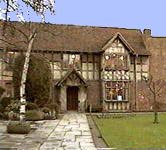 |
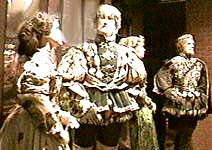 |
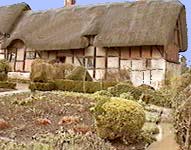 |
Avebury’s Stones
The next morning we traveled south from our B & B towards Avebury. We decided to visit Avebury rather than Stonehenge, since Stonehenge’s fabled stones rest behind a barrier. Avebury’s accessible one mile circle of huge stones dates from the same period as Stonehenge. Visitors can walk around the circle and marvel at how and why the stones were placed here over 4,000 years ago, during the age of Egypt’s pyramids. Equally interesting is the fact that today’s village of Avebury sits in the center of the circle.
Glorious Bath
Later that morning we drove to Bath, England’s glorious city of the Georgian era. Two hundred years ago, while New England was fighting for freedom, this city of 80,000 was Britain’s showpiece. Bath received its name from its hot mineral springs where Londoners flocked to "take a bath." The Romans had a large settlement here and a huge complex of Roman baths, rediscovered in the 18th century. The guided Roman baths tour was enthralling. The Pump Room, an elaborate restaurant with Georgian columns, sits above the excavated ruins and served an excellent lunch. We took an afternoon self-guided walking tour of Bath and visited the 15th century Abbey, the Avon River bridge, and John Wood’s Georgian "condos," built in the 1700s in a large circle. Bath is Jane Austen’s England in all its glory.
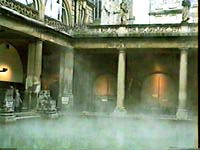 |
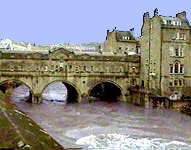 |
The Heart of England
We returned to our Cotswold B & B feeling that our vacation explorations in the heart of England were ending all too soon. We agreed that when we again visit England we will base ourselves in the beautiful, quaint Cotswold Hills and explore other Cotswold villages, Wales, and Oxford.
Click here for details to plan your own trip to the Cotswold Hills and the heart of England.
Les Furnanz